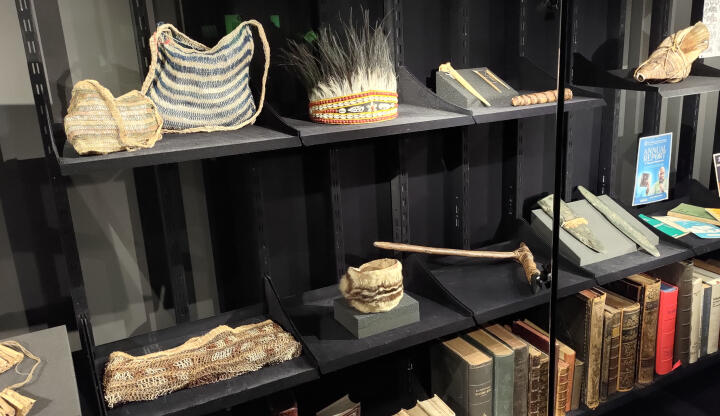Bible Translations in the Arctic, Oceania, and West Africa
Photos

Even in ancient times, scholars ventured to translate the Hebrew Old Testament and the Greek New Testament into Latin, Coptic and even Syriac. This presented them with many linguistic problems, as a complex written language cannot be translated word for word. Individual words can conceal different ways of life and belief systems that were initially unfamiliar to translators, even though the ancient countries were close to each other and maintained lively exchanges.
How much more difficult must it have been for German and English missionaries in the 19th century to reach indigenous peoples, most of whom did not know a written language? The special exhibition "Global Bible. Legacies of (post)colonial Bible translations in the Arctic, Oceania and West Africa", which will be on display at the Bible Museum from 10 October 2025 to 1 March 2026, shows the historical processes, actors and networks that drove the translation and dissemination of the Bible into various indigenous languages during the increasing Western expansion.
Beyond Christianisation, Bible translations also served as a means of colonial rule. The writing of languages could also serve to consolidate colonial structures: by teaching the population to read and write, colonial administrations were able to better understand and control indigenous cultures and languages. Until now, this complex process, which varied depending on the region and context, has been described as originating solely from the Europeans. The three-year international research project ‘GloBil’ at the University of Münster, on which the exhibition is based, has for the first time focused on the indispensable contributions of indigenous translators to the success of the missionaries' Bible translation projects.
The exhibition features old manuscripts, translated Bibles and parts of the Bible in European, Arctic, Oceanic and West African languages. Linguistic materials such as grammars, dictionaries, textbooks and other items illustrate the multi-stage process behind missionary Bible translations in the 19th and early 20th centuries. Since the languages into which missionaries and their local colleagues wanted to translate the Christian scriptures originally existed in oral form, collecting words and creating grammars, primers and dictionaries were essential preparatory steps before translating the Bible.
In addition, the exhibition displays ethnographic artefacts from the three regions, shedding light on the socio-cultural milieus in which the missionaries lived and translated the Bible. To visualise the legacy of Bible translations in the 20th century, the exhibition organisers, led by Dr Felicity Jensz and Dr Michael Wandusim from the GloBil project, commissioned works of art: a video installation by British-Cameroonian artist Leeza Awojobi is on display, and Manfred Wkeng Aseng from New Guinea presents three drawings. A digitised map of the global Bible movement and an open-access database created by the Service Centre for Digital Humanities at the University of Münster round off the exhibition.
The ‘Global Bible’ exhibition is open Tuesday to Sunday from 10 a.m. to 6 p.m. at the Bible Museum, Pferdegasse 1, 48143 Münster. Open tours take place on Sundays at 3 p.m., for which no registration is required. A bilingual catalogue has been published to accompany the exhibition and is available at the Bible Museum for €24.90.





